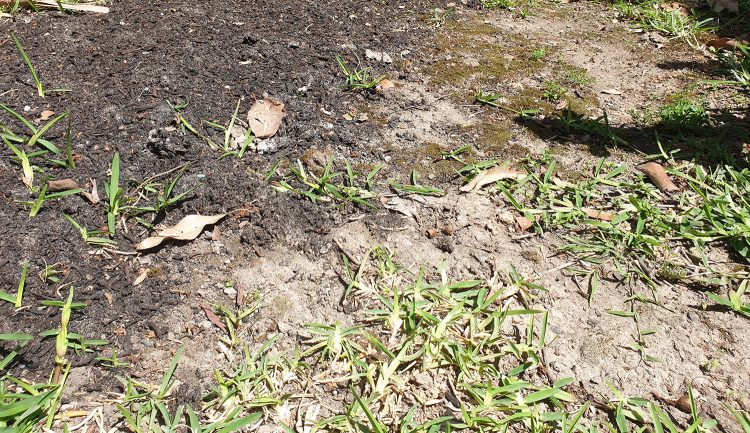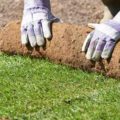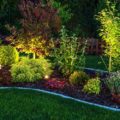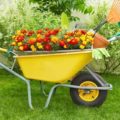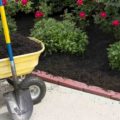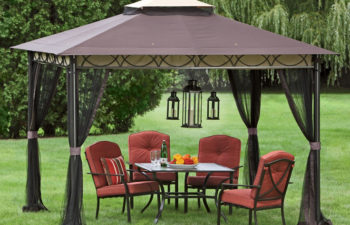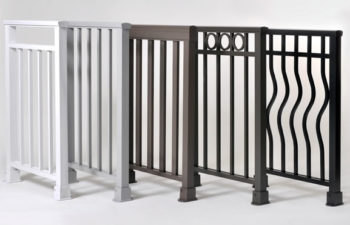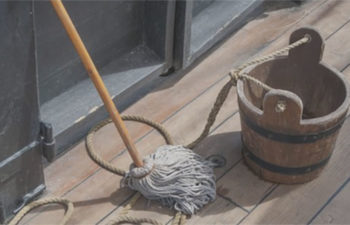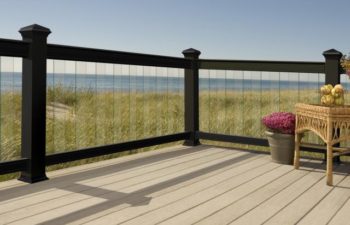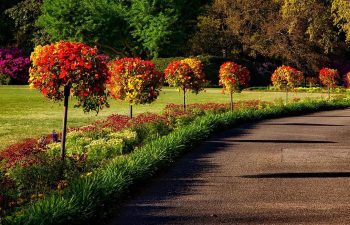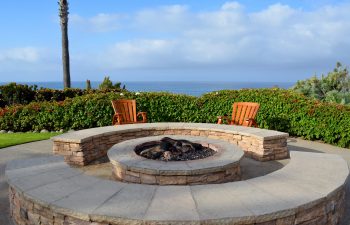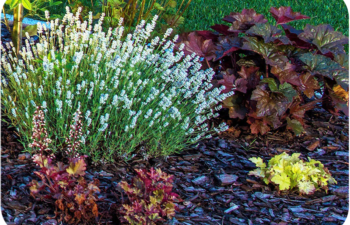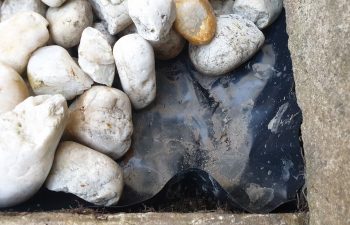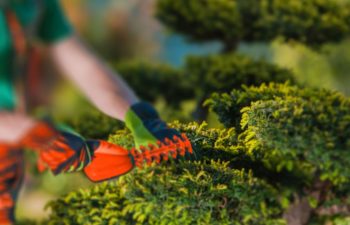Gardens are supposed to be green. But what if you have a problem with your soil? What if it’s too acidic, or the drainage is bad, or it’s just sandy and dry?
It’s a common problem for homeowners to be confronted with the dilemma of living in an area where they can’t grow grass.
The good news is that there are ways around this, so you don’t need to resort to rock gardens or artificial turf.
Here are some ideas for landscaping your yard if you can’t grow grass.
One option is to use mulch. Mulch can be used to cover the ground and will help to keep moisture in, as well as preventing weeds from growing.
You can buy mulch from a garden center, or you can make your own by composting leaves and other yard waste.
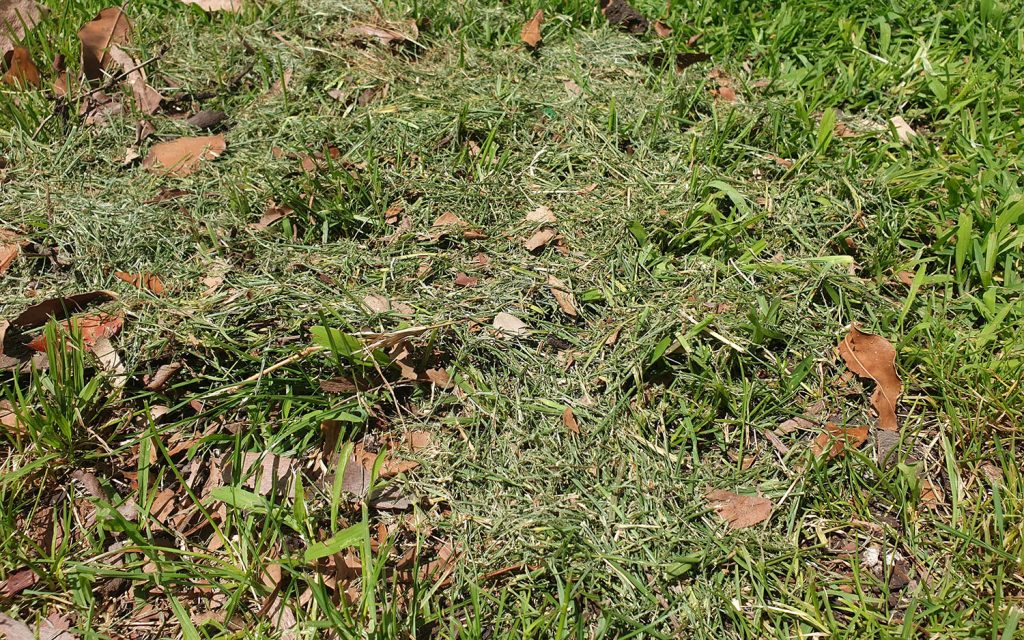
Use grass clippings to patch places where grass does not grow
Another option is to use plants that don’t require much irrigation. You can focus on the ground cover aspect of gardening by planting low-lying plants that will spread across the ground.
Some common choices are pennyroyal , thyme, wild violets, and creeping phlox.
Adding plants and shrubs with different heights, textures, and colors can help to break up the monotony of a lawn. Consider planting shrubs, ivies, and ground cover plants in different areas.
Creeping Moss is another great alternative. It’s very easy to grow indoors or outside. It needs less water than other plants and it spreads fast and easy.
You can also use rock gardens or stone gardens as a landscape element. Rock gardens are an excellent way to add some plants to your yard while still preserving the appearance of bare ground.
The next option is to use low growing flowering plants in containers. Containers can be placed on top of any surface, including rock or wood decks, and will prevent weeds from growing into your crops.
No matter what option you choose, always keep in mind the climate and soil type of your area when planning your landscape.
Ideas for Your Garden if the Grass STILL Won’t Grow
Don’t give up yet if everything you’ve attempted thus far has failed. There are still a few more landscaping ideas to consider.
Use an irrigation system
It’s worth considering that your grass is not growing because of lack of water. Installing an irrigation system for the yard will help keep it green all year round.
A well set up watering system that properly distributes water to all areas of your yard, is a good option if you live in an area with a dry climate.
Building a Patio or Deck
If you’ve already given up on your grass, but your yard is still very exposed, consider building a patio or a deck in the area where the grass used to be. This will give you somewhere to put out patio furniture and relax during the summer months.
You can sit and dine outside when the weather is nice, barbecue in it, or set up recliners or soft cushioned seats for you and your family to unwind in.
They can be constructed from a variety of alternatives such as brick, concrete, gravel, and even wood. Regardless of what material you pick, they are both low-maintenance options.
Using Artificial Grass
There’s a saying that goes, “fake it until you make it,” and this is precisely what you may do with your garden if real grass won’t grow.
Artificial grass is often a combination of both genuine and fake elements, but the intention isn’t to fool anybody. It’s quite easy to use artificial grass instead, and before you start panicking that it will be apparent, keep in mind. Many current artificial grass types are so lifelike that most people would be unable to tell the difference when looking.
Polyethylene grass is soft and long-lasting, with a lovely lively green hue. Nylon grass is extremely durable and thus an excellent choice if the surface will be subjected to a lot of foot traffic or children playing on it.
One downside is that these two don’t come with a particularly low price tag, so if you are looking for a decent artificial grass that also offers excellent value for money, then Polypropylene artificial grass might be worth considering. It’s not as resilient as the others we’ve mentioned, but it still looks great.
Build an Above Ground Pool
Above-ground pools are becoming increasingly popular since they are both simple to set up and maintain, and they cost considerably less than building a conventional pool with all the excavation and concrete work that is necessary.
An above-ground pool may be a fantastic addition to your garden, with the not inconsiderable benefit of offering everyone a lovely peaceful place to unwind when the weather is at its hottest.
Another advantage of above ground pools is that they may be built to fit your landscaping and the space you have.
Try installing a water feature
Installing a water feature is another great idea for areas where grass won’t grow.
This could be something that is relatively cheap, easy to maintain, and wouldn’t damage anything in my home.
The only things you need are a container, some rocks, gravel, a fountain or bubbling device, and some plants. You can find all these items at most craft stores so it would be easy to put together on your own.
Once you have everything set up in your container you will need to add water and you are good to go.
Add some garden art to your yard
Adding some garden art to a bare part of the yard is easy way to have a big impact on your outdoor space.
Some ideas include adding statues, fountains or sculptures that will capture your eye as soon as you walk outside the door.
Not only do they bring beauty into your yard, but they also serve many practical purposes like providing shade or preventing erosion.
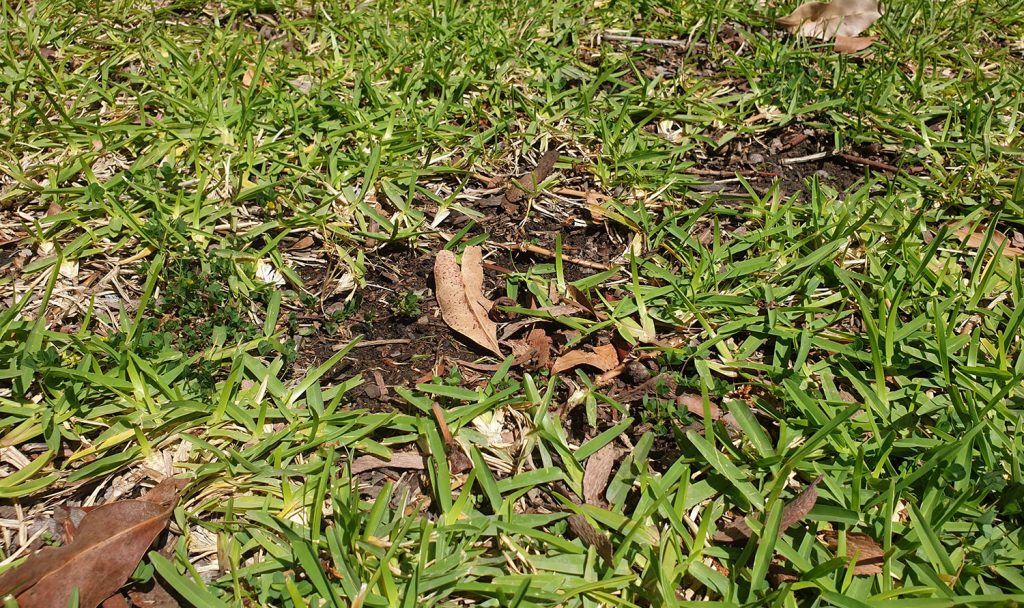
Why Is My Grass Not Growing?
It may appear that grass grows everywhere, but in order for it to live healthily, certain conditions must be met, and if any of these are absent, it is most likely the reason for a lack of grass in a garden.
It must also be fed on a regular basis, and although cutting the grass on a regular basis is not usually an issue, it will be if the lawn is trimmed too short. A deficiency of nutrients in the soil can also hinder grass growth, so if you believe this might be the case, having a soil test done to verify or refute your hypothesis
Finally, there may be a lack of sunshine since grass requires at least six hours of sunlight each day to grow. If the grass is unable to develop properly because it is in the shade for most of the day due to a massive tree or a home,
What is the best landscaping idea for dry areas?
There are many landscapes designs for dry areas, but one of the best is to use only groundcovers. Designs like this typically present no immediate maintenance and provide a natural solution that still can be very colorful with minimal watering.
There are plenty of groundcover options that bloom beautifully with minimal water in many different colors, including various forms of impatiens, columbine (aquilegia) and salvia bouquets (sagebrush).
These areas will not have any trees or shrubs because their root systems require too much moisture to thrive when it’s hot out, which is when these types of climates see most or all rainfall.
In order to add height without any leaves in the heat to block sun from warming up the area, we use ornamental grasses combined with flowering plants.
This is a great way to add some color and shape to dry areas without changing the natural look of the landscape or spending a lot of money on water in addition to time and effort for maintenance.
Will dry area landscaping ideas work in my area?
Many gardeners have problems with turning grass into a lawn. Grass just won’t grow in the thinning areas, eventually being choked out by weeds. The problem is usually lack of nutrients in the soil, compaction or too much shade from trees and buildings.
One solution is to use ground-covers instead of grass for thin spots in your yard, although they can be expensive to plant and will require periodic care.
Another alternative is to raise the grade (raise your lawn using gravel) around any beds containing shrubs or plants to make sure that they get adequate water and sunshine. This allows them to compete more easily against grasses or weed growth without you having to spend all day on weeding!
Raising the grade may also be necessary to divert water runoff away from your home.
If you have a large, open area in your yard and don’t want to spend the time or money to install sod, you can go with landscaping ideas that include using mulch or rocks as groundcover. A disadvantage to this approach is that it can be difficult to keep mulch or rocks looking neat and tidy – they can also be a haven for pests.
One easy solution to this problem is to lay a weed barrier cloth over the area before adding the mulch or rocks. This will help keep the area looking neat and tidy, while still allowing water and air to penetrate to the soil below.
What is the cost of lawn replacement with landscaping ideas?
This can be a tough question because it depends on the size of your yard and the type of landscaping you want to do in addition to or in lieu of grass.
For instance, if you want a full garden with trees, flowers and edging, then the cost could be much higher than simply replacing grass from lack of nutrients or water with ground cover.
If you want just flowerbeds that are easy care then the installation costs may only be around $1,000 instead of more than $10,000 for much more elaborate designs.
Conclusion
Thereafter you have an almost limitless range of landscaping options that you can use to complement your pool and to show off your garden at its very best.
Related Post: More DIY Ideas For Landscaping
